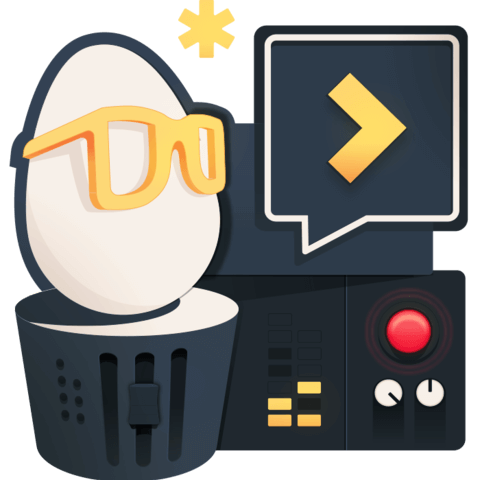Remove Distractions
Any extra information on the screen will easily distract the audience from the purpose of your lesson. Do your best to remove any extra notifications, UI, or other information that would take away from what you're teaching.
[00:00] My screen right now has a few distractions. There are GIT notifications. You can see which branch I'm on. My terminal has some characters in it that aren't really relevant to what we're doing. Even the mini-map can be kind of a distraction.
[00:12] The main thing is always make it full-screen. You'll notice I've hidden the top bar. Often something like a Zen Mode will hide a lot of the UI, or if you go into your settings, you can usually turn off a lot of things.
[00:25] Here I'll turn off the mini-map, so that defaults. Now that's gone.
[00:29] Lastly, in the console, if I open up my .zshrc or .bashrc, you can configure your prompt. I just use this easy prompt .net service.
[00:40] I'll do a basic dollar sign. Paste that in here. Save it. Close it. Open it up again -- the distractions are gone.
[00:49] Now when you look at my main file, we have a nice clean screen, which helps the user focus on what the code is doing. When you run your project, just go ahead and open a browser and do a split screen. Usually the code will take up most of it, because you'll need room to type.
[01:06] Then your demo can often fit in this space, but you'll probably want to bump up the font size of the demo. Always make your editor fonts fairly large, so that people who are watching your lesson on a smaller screen will be able to read your code.
[01:21] Lastly, make sure you're using a high-contrast color theme. If you're using something with too much blue or the background isn't almost all black or all white, some people may have difficulty reading what's on the screen.
[01:34] Aim for something a bit more boring, where you avoid red or solarized dark. Instead, something like default light or default dark should work well.
#Trouble to configure bash terminal ! hi i am using visual studio code in windows , with bash terminal . i tried to execute
$ code ~/.zshrchowever in your demo, i am seeing many values already configured whereas in my .zschrc file is empty.
even though i've configured export PS1="\\$ " but no luck. do i need to install any plugin for bash ?
You might have figured out by now but you can do that in .bashrc.

#Trouble to configure bash terminal ! hi i am using visual studio code in windows , with bash terminal . i tried to execute
$ code ~/.zshrchowever in your demo, i am seeing many values already configured whereas in my .zschrc file is empty.even though i've configured
export PS1="\\$ "but no luck. do i need to install any plugin for bash ?